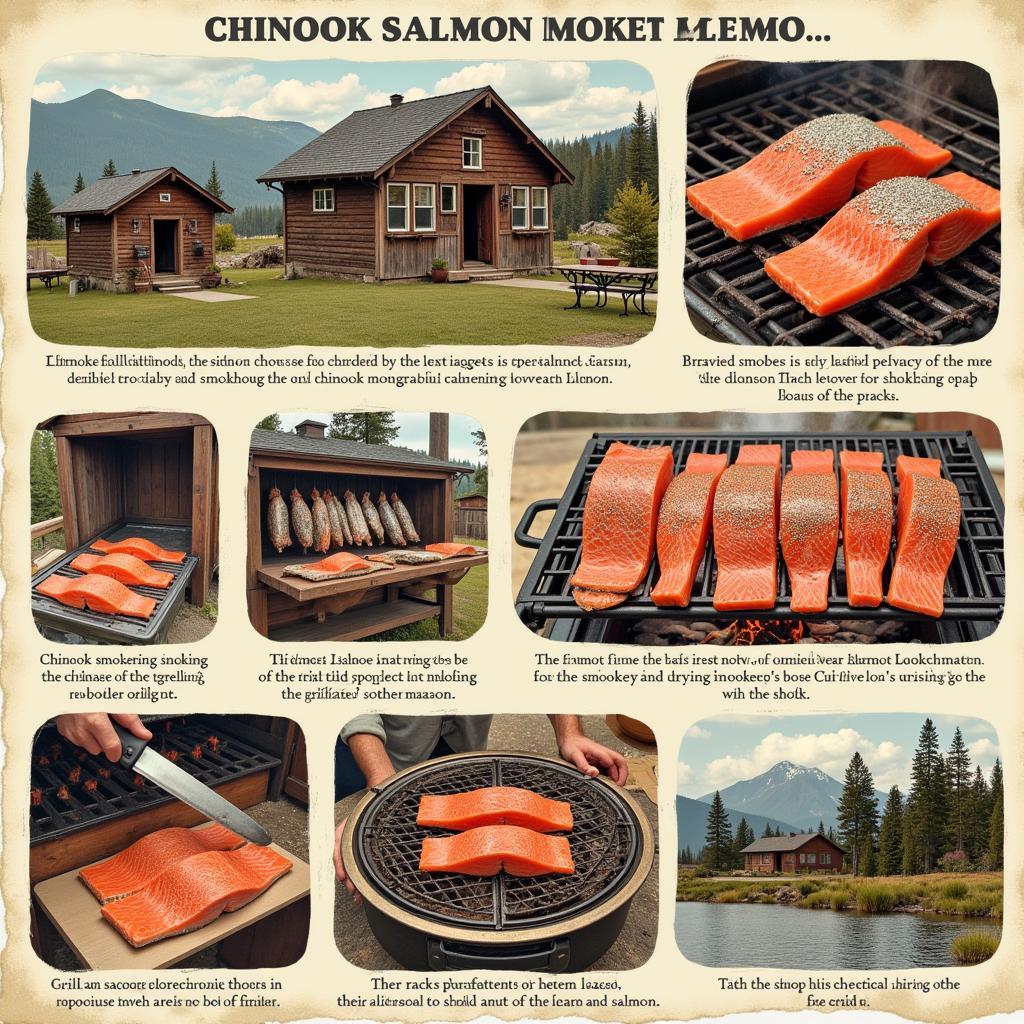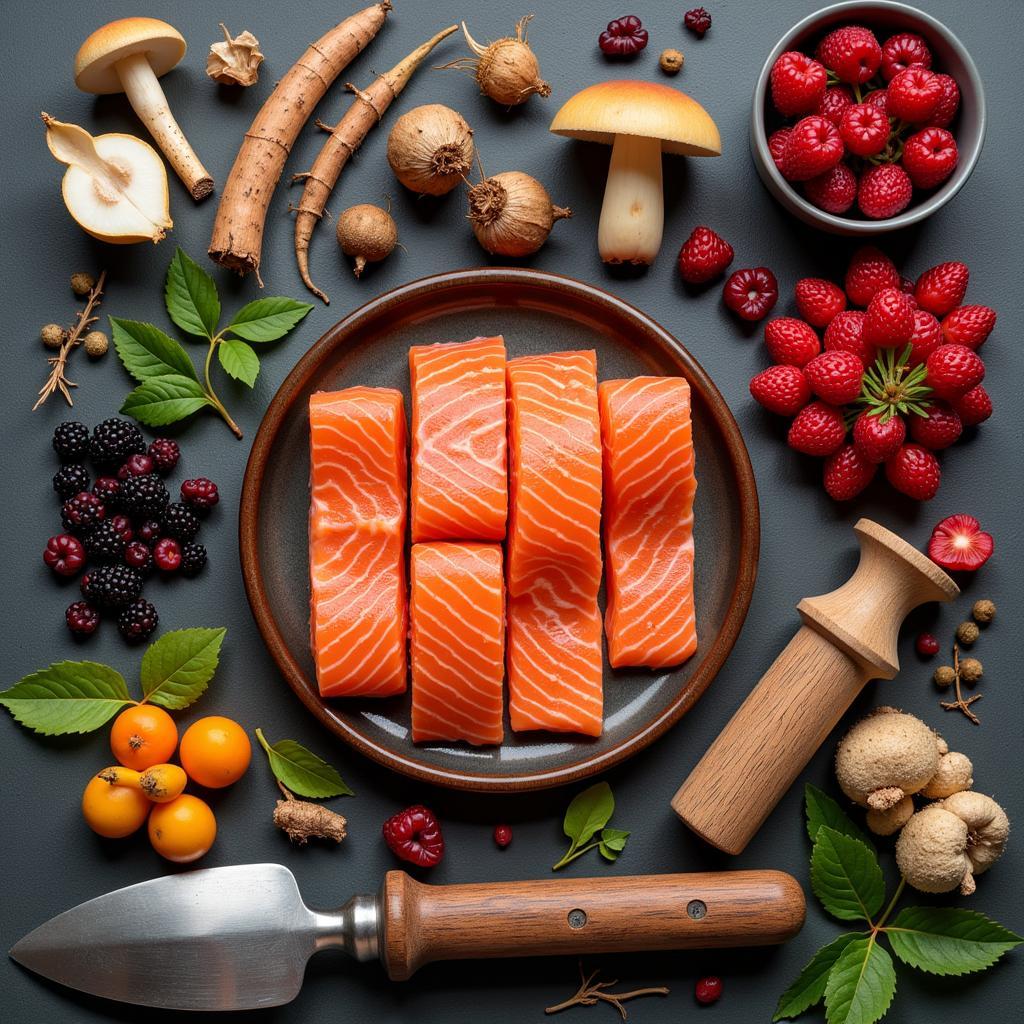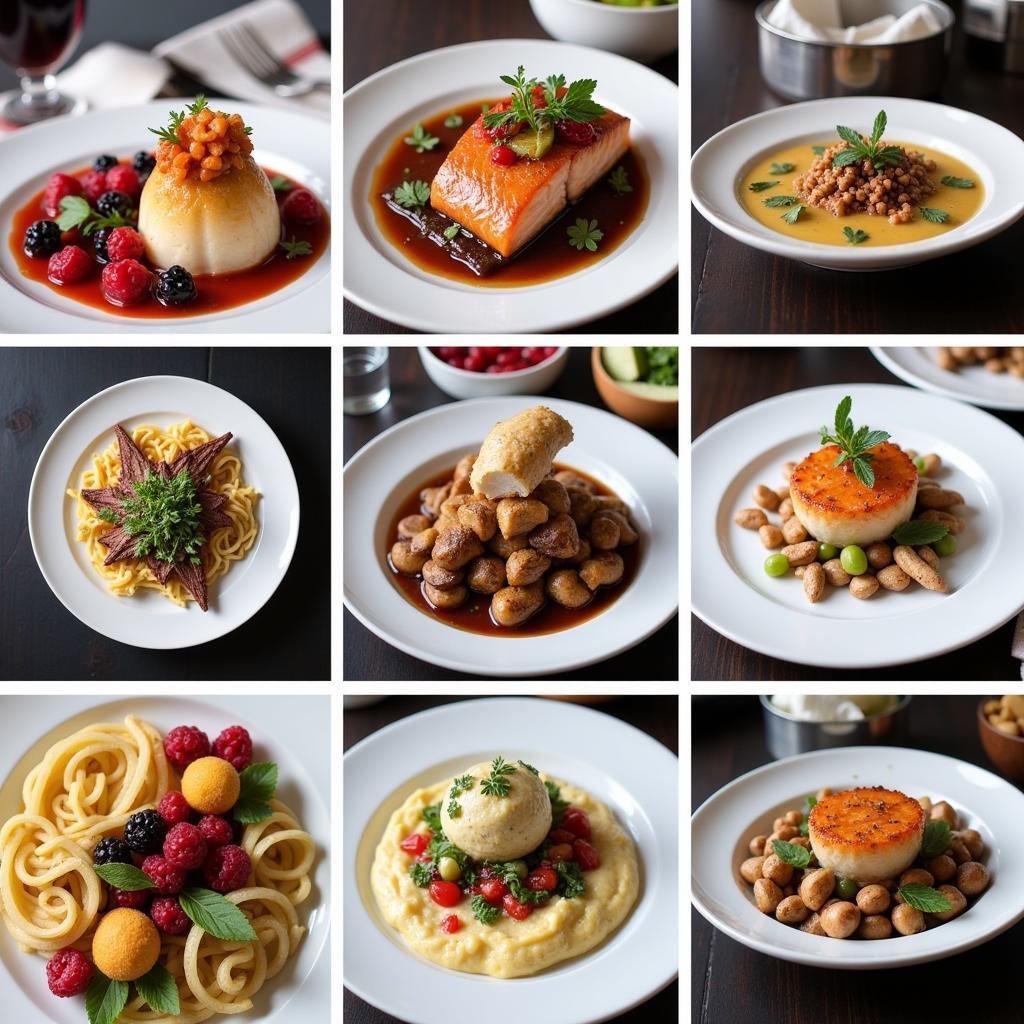Chinook Food, deeply rooted in the traditions of the Pacific Northwest indigenous peoples, offers a unique and flavorful exploration of the region’s bounty. From the rivers teeming with salmon to the forests brimming with berries and mushrooms, Chinook cuisine showcases the harmonious relationship between people and nature. This culinary heritage, passed down through generations, continues to inspire and delight food enthusiasts today.
Exploring the Essence of Chinook Cuisine
Chinook food is more than just sustenance; it’s a celebration of the natural world. The Chinook people, known for their sophisticated fishing techniques and deep understanding of the environment, have crafted a cuisine that reflects the abundance of the Pacific Northwest. Salmon, the cornerstone of their diet, is prepared in various ways, from smoking and drying to grilling and baking. The flavors of the forest, like wild berries, mushrooms, and roots, add depth and complexity to their dishes.
The Significance of Salmon in Chinook Food
Salmon is undeniably the heart and soul of Chinook cuisine. It’s not just a source of protein but a cultural icon, deeply woven into the fabric of Chinook life. The reverence for salmon is evident in their traditional fishing practices, which prioritize sustainability and respect for the natural balance. This profound connection with the salmon runs is reflected in the diverse and ingenious ways they prepare this prized fish. Smoking, a technique perfected over centuries, preserves the salmon while imparting a rich, smoky flavor. Drying allows for long-term storage, ensuring sustenance throughout the year.
 Traditional Chinook Salmon Preparation Methods
Traditional Chinook Salmon Preparation Methods
Beyond Salmon: Exploring the Diversity of Chinook Ingredients
While salmon takes center stage, Chinook cuisine boasts a diverse array of ingredients. Huckleberries, wild blackberries, and salal berries add a touch of sweetness and tartness to dishes. Mushrooms, foraged from the lush forests, provide earthy notes and unique textures. Roots and tubers, like camas bulbs and wapato, offer a starchy base for meals, reflecting the Chinook people’s intimate knowledge of the land and its edible treasures. These ingredients, carefully harvested and prepared, contribute to the unique flavor profile of Chinook food.
The Art of Preservation: Ensuring Abundance Throughout the Year
Preservation techniques play a vital role in Chinook food culture. Smoking and drying are not only methods of enhancing flavor but also essential strategies for ensuring a steady supply of food throughout the year. These methods, passed down through generations, demonstrate the Chinook people’s resourcefulness and adaptability to the region’s seasonal changes. By preserving the bounty of the summer and fall, they ensure sustenance during the leaner winter months.
 Diverse Ingredients in Chinook Cuisine
Diverse Ingredients in Chinook Cuisine
Chinook Food Today: Preserving Tradition and Embracing Innovation
Today, Chinook food continues to thrive, both in traditional forms and through contemporary interpretations. Chefs and home cooks alike are rediscovering the rich flavors and cultural significance of this cuisine. By incorporating traditional ingredients and techniques into modern dishes, they are ensuring that the legacy of Chinook food endures for generations to come.
Learning from the Past: Reconnecting with Chinook Culinary Heritage
Efforts to preserve and revitalize Chinook food traditions are gaining momentum. Workshops and cooking classes offer opportunities to learn about the history and techniques behind this unique cuisine. By sharing knowledge and fostering appreciation for Chinook food, these initiatives are helping to strengthen cultural identity and promote sustainable food practices.
Dr. Amelia Clearwater, a renowned anthropologist specializing in Pacific Northwest indigenous cultures, notes: “Chinook food is a testament to the ingenuity and adaptability of the Chinook people. Their deep understanding of the environment and their respect for natural resources are reflected in every aspect of their culinary traditions.”
Chinook Food in the Modern Kitchen: Adapting Tradition for Contemporary Tastes
Modern chefs are embracing Chinook ingredients and techniques, incorporating them into innovative dishes that appeal to contemporary palates. Salmon, prepared with modern culinary techniques, is featured in upscale restaurants, showcasing the versatility of this iconic ingredient. Wild berries and mushrooms are finding their way into desserts and sauces, adding a touch of the Pacific Northwest to diverse culinary creations.
Chef Edward “Eddie” Rainwater, a celebrated chef known for his innovative approach to Pacific Northwest cuisine, shares his perspective: “Chinook food offers a wealth of inspiration for modern chefs. The flavors are complex and unique, and the traditions behind them are deeply compelling.”
 Modern Interpretations of Chinook Dishes
Modern Interpretations of Chinook Dishes
Conclusion: Experiencing the Richness of Chinook Food
Chinook food is a journey into the heart of the Pacific Northwest. From the iconic salmon to the diverse flavors of the forest, this cuisine offers a unique and unforgettable culinary experience. By exploring the traditions and embracing the innovation surrounding Chinook food, we can gain a deeper appreciation for the rich cultural heritage of the Pacific Northwest. So, embark on this culinary adventure and discover the wonders of Chinook food for yourself!
FAQ
- What is the main protein source in Chinook food? Salmon is the primary protein source.
- What are some common preservation techniques used in Chinook cuisine? Smoking and drying are commonly used.
- What types of berries are often used in Chinook dishes? Huckleberries, wild blackberries, and salal berries are frequently used.
- What is the cultural significance of salmon in Chinook culture? Salmon is a cultural icon, deeply intertwined with Chinook life and traditions.
- How is Chinook food being preserved today? Through workshops, cooking classes, and the efforts of chefs and home cooks.
- Where can I learn more about Chinook food and culture? Many resources are available online and in local libraries.
- How can I incorporate Chinook ingredients into my own cooking? Start by experimenting with salmon, wild berries, and mushrooms in your recipes.
For any assistance, please contact us at Phone Number: 02437655121, Email: [email protected], or visit us at 3PGH+8R9, ĐT70A, thôn Trung, Bắc Từ Liêm, Hà Nội, Việt Nam. We have a 24/7 customer service team.